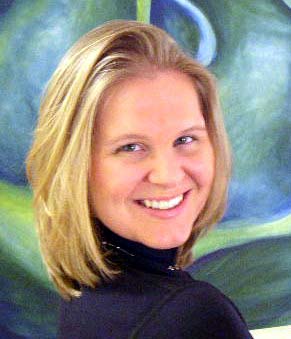Nevertheless, it may put some things in context:
Buckminster Fuller is often quoted as saying, “When I am working on a problem I never think about beauty. I only think about how to solve the problem. But when I have finished, if the solution is not beautiful, I know it is wrong.”
These paintings look to the sprawling, tangled organic growth of the natural world and reduce it to linear elements, modular forms, and rhythms. By repeating one aspect of the vast complexity of the perceived world, one can gain access to patterns and systems previously hidden in detail.
Acts of meditation seek to discover simplicity and clarity amidst a super-saturation of information and experience. Mathematically, living in this world is akin to a profusion of outlying data points when one is seeking a smooth trajectory curve. The density of influencing factors is overwhelming, confusing, and frustrating, and one could regard cultural angst as the inability to recognize patterns and meaning, or the failure to derive pleasure from them. A method of abstraction which hones in on one aspect of movement, development, or perception provides a focus of organization, around which data sets demonstrate new meanings and altered trajectories, more beautiful for their idiosyncrasies.
The geometry is simple, using familiar curves and archetypal forms such as circles and intertwining lines to form branching compositions reminiscent of both the microscopic interior and macroscopic exterior worlds. By allowing a system to propagate organically as a collection of objects or ideas, these paintings become living things themselves, exemplifying the phenomenological experience of set theory. The overarching principles of organization which take over become both a definition and extrapolation of beauty.
If spirituality is considered as a problem-solving expedition, one can say that finding order and understanding one’s place in the greater whole is solving a significant aspect of being. The harmonious connection of oneself to nature and the systems and cycles of life has long stood as a powerful driving psychological force. An intense clarity emerges in this painting process when undulating, intertwining masses of people, objects, time, geology, and forms of energy are abridged and condensed into a small shift on an elegant curve.
Science being merely a system of aesthetic preferences, order is not the only measure of truth and beauty. The methodology of the scientific method, however, provides a starting-off point for other kinds of exploration. By controlling the data set involved, particularly by limiting the colors within mathematical relationships or restricting the relation of objects to scale, the painting process mimics the initial steps of variable controls. In these limitations and further reductive measures, one can translate – and in some ways transcend – what exists in the world, becoming able to view them in an elemental way.
Many artists have dealt with organization and modular organic forms, notably Eva Hesse, Brice Marden, Terry Winters, Alexander Ross, and Matthew Ritchie. This work is strongly influenced by eccentric abstraction and the linear compositions of countless contemporary painters. It is also imbued with a sense of 1930s and 40s American modernists, including Arthur Dove and Georgia O’Keeffe, following a method of abstraction based in looking as closely as possible and focusing one’s concentration to the simplest moments within the greater whole.
(I really would love feedback about these concepts, even if you think it's complete nonsense - don't be shy - chime in.)


No comments:
Post a Comment